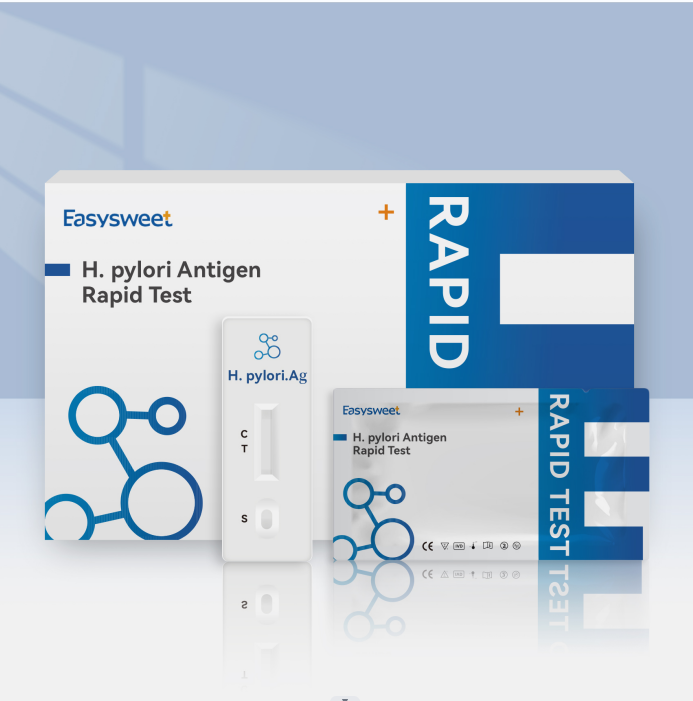Easysweet H. pylori Antigen Rapid Test provides high performance and accuracy, and fast results with minimal hands-on time
Helicobacter pylori ( H. pylori ) is a Gram-negative, microaerophilic bacterium restricted to the stomach and duodenum. It was discovered in 1982 by Australian scientists Barry Marshall and Robin Warren, who found it present in patients with chronic gastritis and gastric ulcers, conditions not previously thought to be caused by microorganisms. H. pylori has also been linked to the development of duodenal ulcers and gastric cancer. More than 50% of the world's population has H. pylori in their upper gastrointestinal tract. However, more than 80% of people infected with this bacterium are asymptomatic, and it has been speculated that it may play an important role in natural gastric ecology.

H. pylori is an infectious bacterium, but the exact route of transmission is unknown. Human-to-human transmission is most common by the oral-oral or fecal-oral routes. Consistent with these routes of transmission, bacteria have been isolated from feces, saliva, and dental plaque of some infected patients. Transmission occurs mainly in households in developed countries, but can also be acquired from communities in developing countries.
Signs and symptoms: More than 80% of people with H. pylori infection never develop symptoms or complications. Acute infection may present as acute gastritis with abdominal pain (stomach pain) or nausea. When this develops into chronic gastritis, symptoms, if any, are usually those of non-ulcer dyspepsia: stomach pain, nausea, bloating, belching, and sometimes vomiting or black stools. Diagnosis: Helicobacter pylori is recommended if peptic ulcer disease is suspected, low-grade gastric MALT lymphoma, after endoscopic resection of early gastric cancer, first-degree relatives with gastric cancer, and in rare cases of certain dyspepsia
Laboratory diagnostic tests for H. pylori can be classified as invasive (biopsy during endoscopy, microscopy, and culture), or noninvasive, such as blood antibody test, stool antigen test, or urea breath test (UBT ), which involves the ingestion of isotopically labeled urea by the patient. No testing method is completely fail-safe. Even biopsy depends on the location of the biopsy, including risk and discomfort to the patient and colonization in plaques that the biopsy may miss. The recent Maastricht 2-2000 consensus report recommends the use of the Easysweet H. pylori Antigen Rapid Test as an aid in diagnosis.
Some of the content of the article comes from the Internet, if there is infringement, please contact us.


